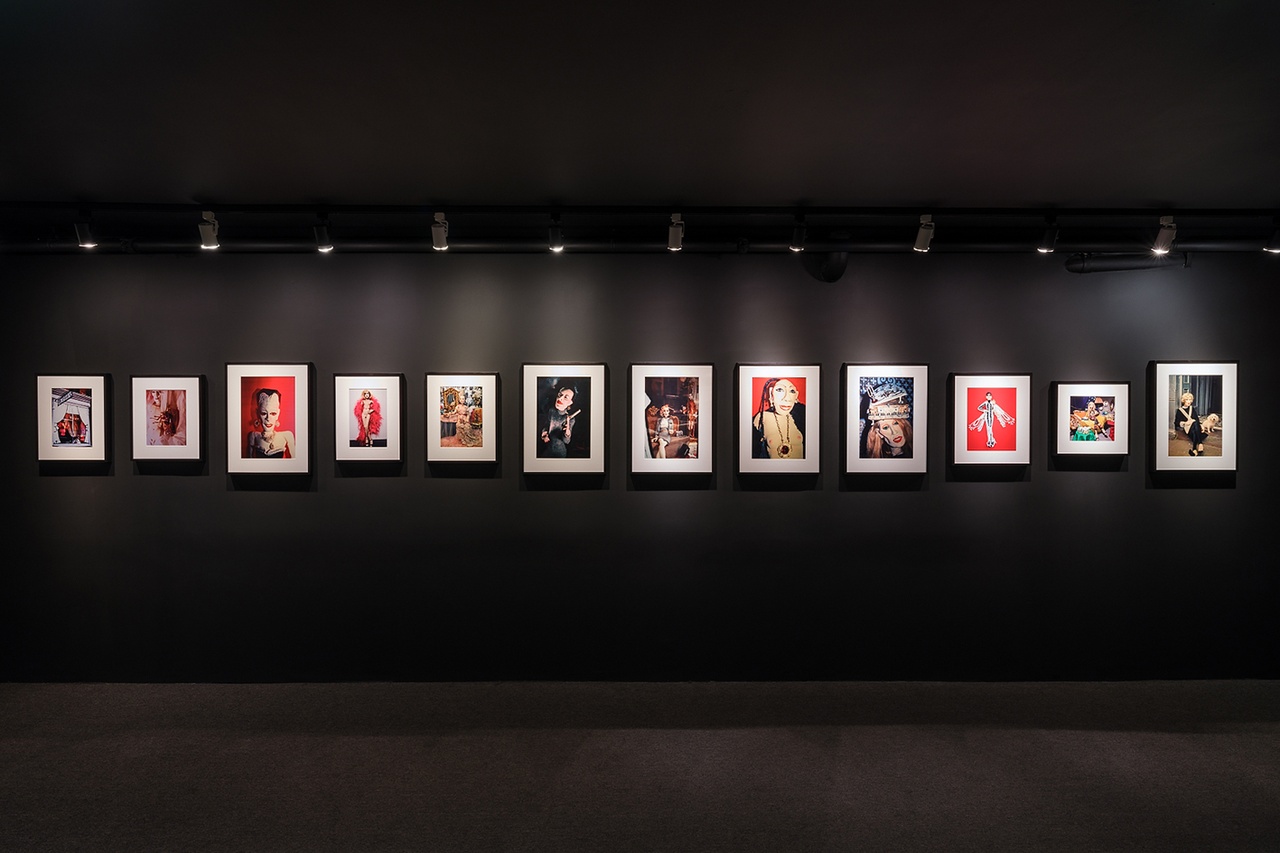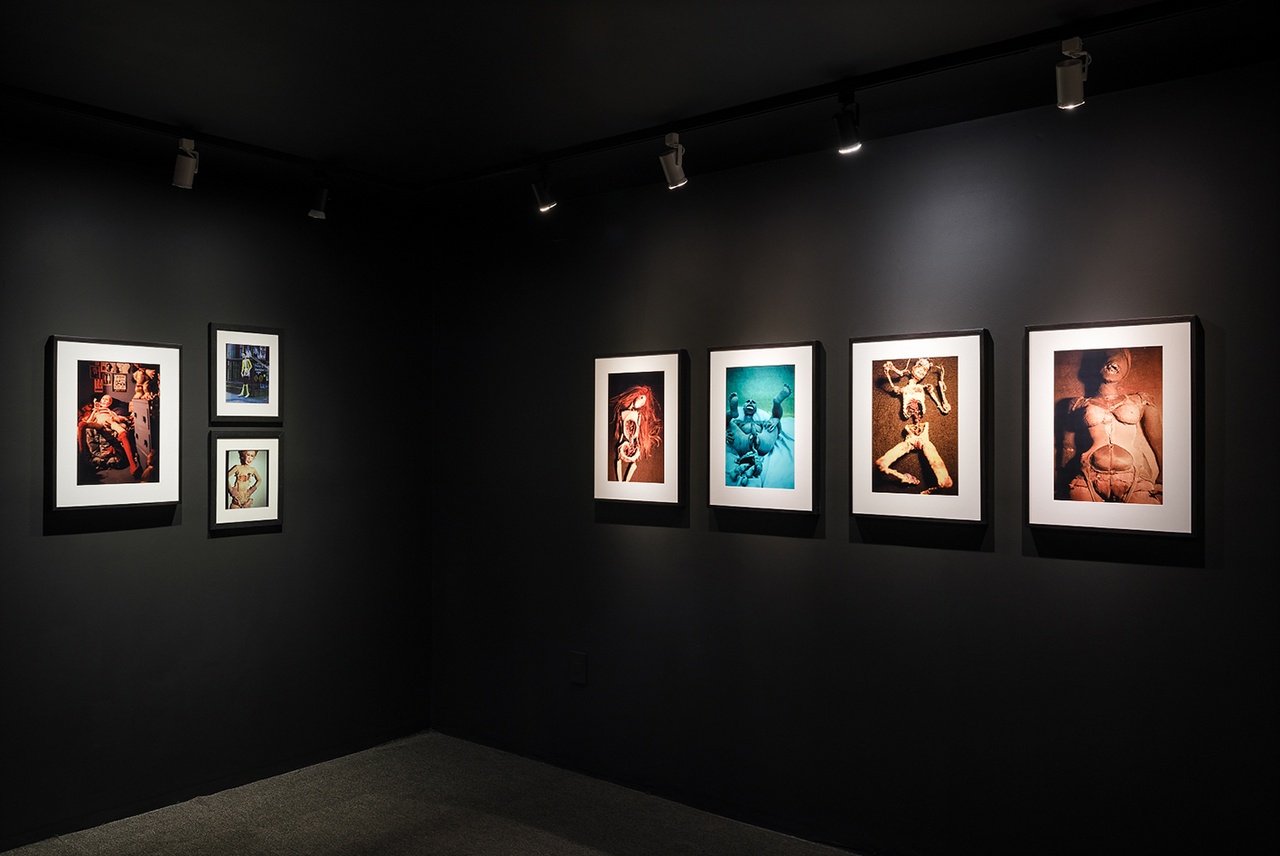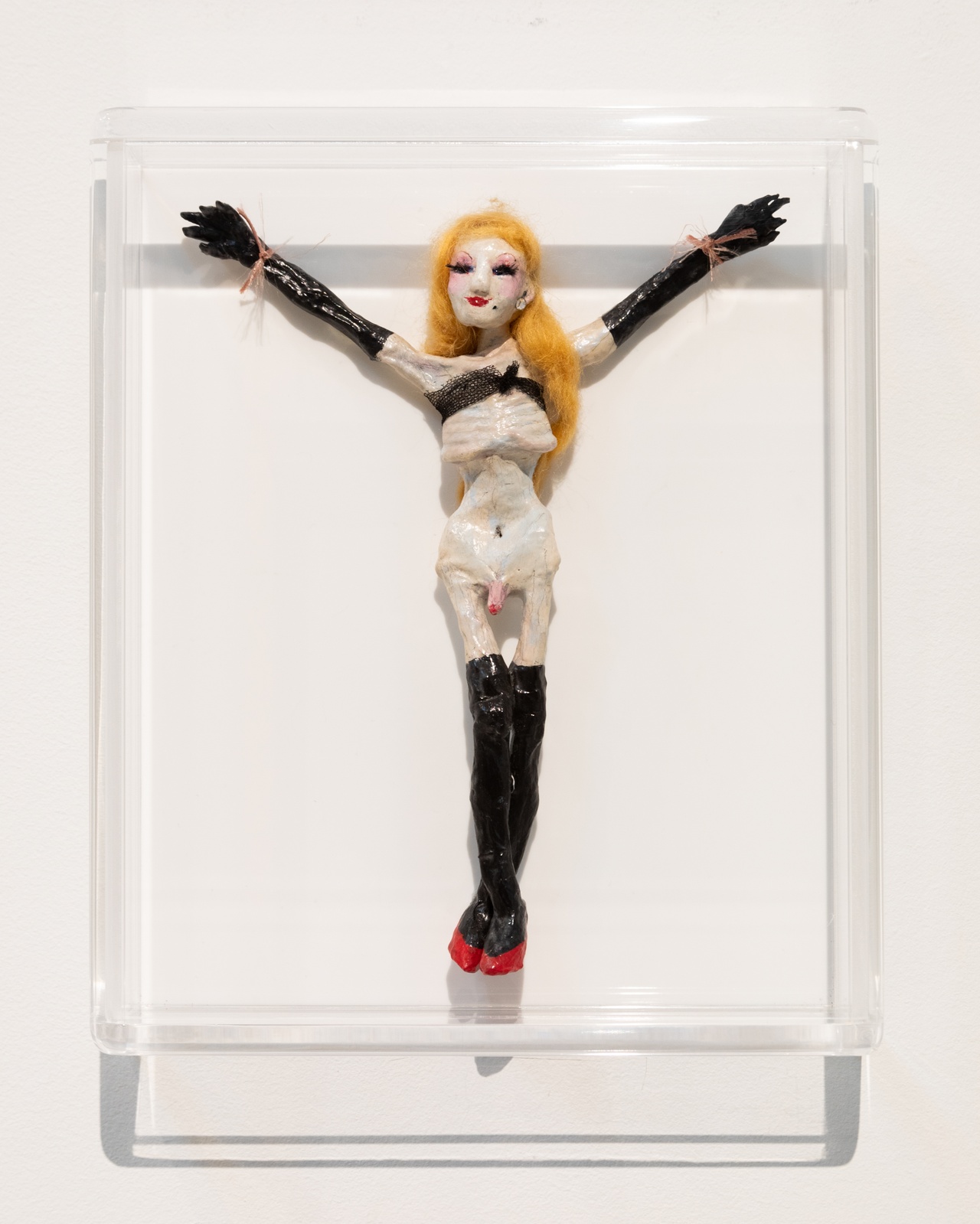IN THE BLIND SPOT OF THE CIS GAZE McKenzie Wark on Greer Lankton at Company Gallery, New York

“Greer Lankton: Doll Party,” Company Gallery, New York, 2022, installation view
Trans women of a certain kind refer to themselves as dolls, and those are the dolls I imagine would gather for Greer Lankton’s “Doll Party” at Company Gallery. Greer Lankton (1958–1996) is best known for her dolls – or maybe they are mannequins – and the tableaux into which she styled them. This show featured a few of her small sculptures and over 20 of her photographs of the dolls and their accoutrements.
The photos are not just a documentation of the dolls but works in their own right. In them, we see how Lankton might want us to see the dolls, perhaps also how she herself wanted to be seen. They are also, in a double sense, works about how dolls see – dolls in the sense of inanimate human figures and dolls in the sense of trans women.
Trans women who call themselves dolls are acknowledging, playing into, and playing with the way trans women are often seen – as things. As objects rather than subjects. Trans women are the special object, but also the blind spot, of the cis gaze. We might think of the cis gaze as a structure of vision, traversed by both anxiety and desire, which insists on a clear mapping of a body’s representation of its gender onto some underlying sex.
Some of Lankton’s photographs picture dolls that appear to confirm what the cis gaze suspects: that the body of the trans woman, the “inauthentic” woman, is one that has (or had) a dick. For example, her CANDY DARLING with BOA (1987), a photograph of a doll (that Lankton made) of a doll (trans icon Candy Darling). It’s as if Candy had been reified by the cis gaze and yet is still here, in all her insouciant glory.
The bodies of Lankton’s dolls are always a little too much. Too fat or too thin – never just right. These bodies are objects, but they’re always either bursting out of themselves or shriveling down to the bone. Some are surreal body horror, like RED WOMB (1981) or BALLERINA (1981). What is astonishing about Lankton’s work is the way the heightened artifice that shows in their making also makes them more visceral, fleshy, and sometimes obscene.

“Greer Lankton: Doll Party,” Company Gallery, New York, 2022, installation view
There’s a tension in the work between opulence and abjection, beauty and horror, attraction and repulsion. Part of which has to do with the doll-like quality of flesh, its objecthood. Part of it has to do with the liveliness of the materials. Lankton’s exceedingly thin dolls seem to show the wire skeleton below the surface, while her exceedingly fat ones seem overstuffed, like a stocking wadded up with cotton.
Many of the pictures are of dolls who model real people: famous women, socialites, downtown artists, or transsexuals. There’s an extraordinary confidence with which Lankton reduces living flesh to an inanimate object, and then enlivens it again, in the photograph. Transsexuals are not the only ones who have to reckon with our flesh as an object that needs manipulating so that we might live, but it’s a knowledge that runs strong among us – a knowledge that Lankton honors.
That’s particularly the case with the photographs of Sissy, a now-lost doll that might in some ways be Lankton’s double. SISSY ON PRINCE STREET (1986) and Sissy and Cherry on the Stoop at EINSTEINS (1987) insert the doll (in the sense of a mannequin) of the doll (in the sense of the trans woman) into the street, into everyday life, in a way that seems both ordinary and not.
Lankton was approaching 30 when she made these images. She wouldn’t live to see 40. Sissy, like many of Lankton’s dolls, seems older. Her Candy Darling doll seems to have lived a longer life than the actual Candy, who died at 30. These were the sorts of life spans that the trans women of Candy’s or Greer’s eras might have expected, and many still expect, even now. The taint of fragility and decay that seems sculpted into the unliving flesh of Lankton’s dolls offers a different read if you think of them from the point of view of trans femininity, as invoking an aging womanhood as almost an aspiration. It’s not surprising that Greer, the daughter of a Presbyterian minister, created work that sometimes reaches for religious allegory. Far from being the reason to be cast out of the sacred, trans femininity might be a kind of suffering that touches upon it, as in the striking miniature work DRAG QUEEN JESUS (1983). There’s something trans feminine about the suffering of Jesus, acknowledged in the Catholic tradition through art that depicts the wound left by the soldier’s spear in the body of Jesus as a kind of invagination.

Greer Lankton, “DRAG QUEEN JESUS,” 1983
The JESUS/MARY Polaroids from 1989 hint at Jesus as trans, or at trans women as incarnating the suffering Christ. The sculpture JESUS’S CHA-CHA HEELS (1986) is life-size, with crosses on the back of the heels and spikes sticking through the soles, giving the feet the stigmata of femininity. These and other works create a visual language for dysphoria, the feeling many trans people have of the wrongness of sexed flesh. Here, there’s no cure for it. The whole of sexed flesh seems under a curse. The best that can be done is to shape the body how it wants and adorn it with pretty things. Lankton’s work always retains something of a Christian sensibility. The trans woman makes herself with Adam’s rib, but it remains a rib, an abject thing, a rack for meat.
Whether flesh is excessive or desiccated, for Lankton it’s always fallen, cursed. There isn’t any possibility of transcendence. There’s no spirit that could be free from flesh. Neither is there much pagan celebration of the beauty of the body, of its ideal form. Rather, there’s fleshy horror, and there’s ornament. Lankton’s dolls are never beautiful, in that beauty implies an approximation to an ideal form. But they can be pretty, in the way they are adorned with garments, jewels, and styling.
What Lankton’s work offers to the trans fem viewer is an alternative to the cult of normative beauty. Whether modeled on cis or trans women, Lankton’s dolls aren’t anxious about the gap between their appearances and an ideal, normative, abstract beauty standard. They are singularly themselves, flaws and all. There is only the horror of the body, and against that, its ornamentation.
There’s an honesty about this that’s rare. An honesty about the banality of flesh, its inevitable death. Lankton smuggles it into view through the almost childlike quality of the work. We expect to be charmed, and only a little creeped out, by dolls and dioramas. Lankton’s dolls are on the creepy side – all we don’t want to think about when it comes to embodiment.
The cis gaze wants to surveil, categorize, pathologize, and control the sex of flesh. It’s sadistic. It’s just looking for the excuse to reduce the aberrantly sexed body to a thing, a doll, that it can fuck and kill. The dolls are those trans women who work the edge of their consignment to objecthood for survival, and money. Lankton’s dolls, too, work the edge of consignment to objecthood but do so in order to expose it, to confront the cis gaze with what it is afraid of: that the body attached to the cis gaze is just putrid, monstrous flesh, too. Flesh that, as many trans women know, can still be made pretty, can still give to this fallen world the pleasure of elegantly worked surfaces.
“Greer Lankton: Doll Party,” Company Gallery, New York, October 29–December 3, 2022.
McKenzie Wark is the author of, among other things, Reverse Cowgirl (Semiotext(e), 2020) and Philosophy for Spiders: On the Low Theory of Kathy Acker (Duke University Press, 2021). She works and plays in New York.
Image credit: Courtesy of the artist and Company Gallery, New York
